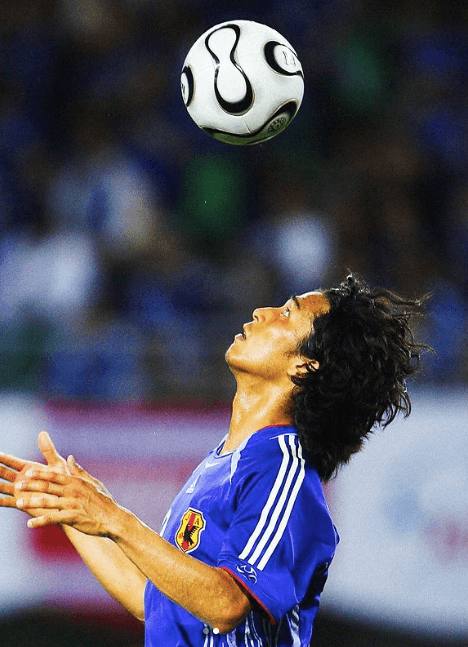Want to know who are the best Japanese Soccer Players of all times? Check out this list and learn about the players who have made a significant impact on the game over the years.
From prolific scorers to legendary midfielders, Japan boasts a rich history of footballing talent. We unveil the top 8 Japanese soccer players who’ve dazzled on the pitch, both at home and abroad, leaving their mark on the beautiful game.
Page Contents
Amazing Japanese players of all time
Junichi Inamoto (2000-present, five goals)
One of the very first Japanese players to be given the opportunity to play in European football was Inamoto. In the beginning, he played for Arsenal, but in 2002, he made the move to Fulham.
There, he scored goals against teams like Manchester United, but a leg injury ultimately ended his time spent in West London.


He scored goals for his country at the 2002 World Cup, finishing as the tournament’s best scorer, and he scored against both Belgium and Russia.
On the other hand, after it, he lacked the self-belief necessary to continue performing at his highest level for an extended period of time.
He has bleached hair and plays the position of midfielder.
- Related: History Of Football In Japan
Shunsuke Nakamura (2000-2010, 24 goals)
During his time at Parkhead, Nakamura has been a part of some events that will live long in the memory. Before moving to Scotland in 2005, he was rumored to be interested in playing for a number of clubs, including Athletico Madrid and Borussia Dortmund, among others.

He is tied for second all-time with his country with 24 goals scored and was one of the best players for Celtic.
At the 2004 Asian Championships, where he was named the tournament’s Most Valuable Player, Nakamura demonstrated what he is capable of accomplishing.
Hidetoshi Nakata (1997-2006, 11 goals)
When Nakata, at the age of 29, decided to end his professional baseball career, it seemed like a huge waste of talent.
After all, he was responsible for a significant accomplishment in Italy: AS Roma’s championship win in Serie A in 2001, followed by Parma’s victory in the Coppa Italia the following year at the expense of Juventus.

However, after playing for both Fiorentina and Bolton Wanderers, the midfielder eventually decided to retire and gave the following explanation to TMW: “Day after day I realized that football had just become a big business.
I could feel that the team were playing just for money and not for the sake of having fun. I always felt that a team was like a big family, but it stopped being like that. I was sad, that’s why I stopped at only 29.”
In 1998, when Japan was trying to qualify for the World Cup for the first time, he was a star performer by scoring five goals. In addition to that, he was considered for the Ballon d’Or award that year, and he was also considered for the award twice more after that.
Kunishige Kamamoto (1964-1977, 80 goals)
Long before the beginning of the J-League in 1993 and all of the success and exposure that has accompanied it, Japan produced its first true superstar in the form of One-Club Man Kamamoto. He was the first real superstar that Japan produced.
Now, 70 years old, Kamamoto made a living off of goals throughout his career, both for his club and for his country.
The center forward scored more than 250 goals during his time playing for Yanmar Diesel, which spanned a period of 17 years. It’s pretty impressive that he’s only missed out on a double-digit return three times in his career.

In addition, he was extremely productive for Japan, where he is still their all-time leading goalscorer despite having four fewer goals than caps.
At the Olympic Games held in Mexico in 1968, his goals were a contributing factor in the success of the Asian nation’s bid for the bronze medal.
Yuji Nakazawa (1999-2010, 17 goals)
Nakazawa is revered in his native country of Japan because he is one of only four Japanese footballers to have earned a century of caps for their national team.
The 36-year-old defender was known for his toughness in the tackle, and he also had a knack for contributing with goals at crucial times.
After leading his country to victory at the 2010 World Cup in South Africa, where he captained the team and scored 17 goals, he made the decision to retire from international football.

Among his goals scored were hat tricks in victories over India and Thailand. In addition, the central defender was responsible for three additional goals scored during the qualification phase of his final World Cup.
Many people consider Nakazawa to be one of the greatest football players in J-League history, despite the fact that he is still active in the league with Yokohama F Marinos.
In addition to being honored with the title of Japanese Footballer of the Year in 2004, he has been selected for inclusion in the Team of the Season on five separate occasions.
Kazuyoshi Miura (1990-present, 55 goals)
Fans of Japanese soccer will almost universally agree that Kazuyoshi is one of the pioneering figures in the history of the sport in Japan.
Because he is still active in the game at the ripe old age of 53, he holds the record for being the oldest footballer and oldest goalscorer in the history of the sport who is currently participating in a professional league anywhere in the entire world.

Not only is he dedicated to his sport, but he also possesses an astonishing level of talent in it.
Even though he is a good goal scorer, he is most famous for his incredible skill at dummying opponents with his signature “Kazu Feint.”
When he gets a goal, he always does his signature dance, which is called the “Kazu dance,” to let everyone know that he has scored. This ensures that everybody is aware of who scored the goal.
Early on in his career, he gained recognition on a global scale, which led to him becoming the very first Japanese player to ever compete in Serie A.
However, he struggled to adapt to the style of play that was prevalent in Europe, and as a result, he ultimately decided to head back to Japan in order to continue his success there.
Keisuke Honda (2008-present, 53 caps)
When Keisuke Honda scored the game-winning goal in Japan’s 1-0 victory over Cameroon in Bloemfontein in 2010, it was the first time Japan had ever won a World Cup match outside of Japan.
The attacking midfielder followed that up by scoring in the final group match against Denmark, and then he set up Okazaki to score with a nifty piece of skill later on in the match.

During that tournament, he was selected by FIFA as the Man of the Match in three of Japan’s four matches, which led to him being named the Japanese Player of the Year. In addition, he was voted by his countrymen as the Japanese Player of the Year.
His club career has taken him to the Netherlands, Russia, and now Italy, where he joined the Serie A giants, AC Milan, in January. His club career began in the Netherlands.
Although he has not yet won a trophy with the Rossoneri, he did win the Russian Cup twice and the Russian Premier League once while he was playing for CSKA Moscow.
Who is Japan Football Captain?
Maya Yoshida. He plays as a centre-back for the Bundesliga club Schalke 04 and captains the Japan national team.
Does Japan have a good soccer team?
Japan has emerged as one of the most successful teams in Asia since the 1990s, when Japanese football became fully professionalized.
With appearances in the knockout stages in the previous three FIFA World Cups (2002, 2010, and 2018), Japan has established itself as one of the most successful teams in Asia. They have also won the AFC Asian Cup a record four times.
What is soccer called in Japan?
Although the term “football” is used in the official English name of the Japan Football Association, the term sakkā (サッカー) which is derived from the word “soccer,” is used far more frequently than the term futtobōru (フットボール).
Also Read:





